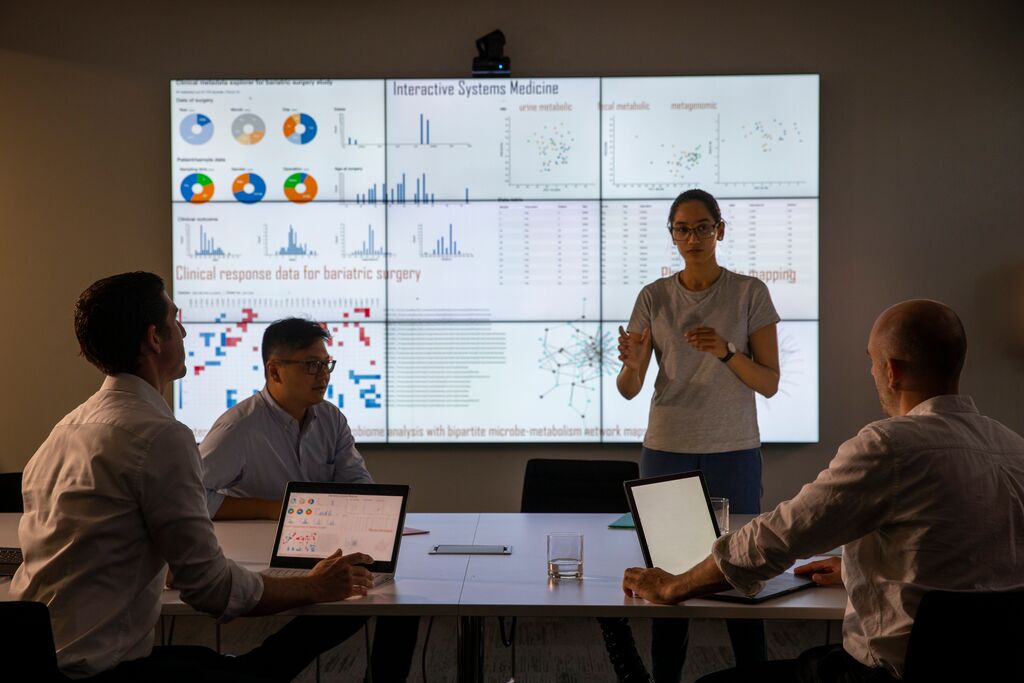





























- Locations
- Asia Pacific
- Overcoming Regulatory Challenges in APAC Cell and Gene Therapy Development
Cell and gene therapies represent a groundbreaking frontier in medical science, offering hope for treating previously incurable diseases. However, their development journey is fraught with complex regulatory hurdles that must be navigated to ensure both patient safety and timely access. Regulatory compliance is the backbone of cell and gene therapy trials, ensuring the safety, efficacy, and accessibility of innovative treatments. The development of these therapies often involves intricate processes that pose significant challenges for stakeholders and create barriers for patients. Navigating these obstacles requires a well-rounded approach that prioritizes regulatory preparedness and strategic planning.
Regulatory Challenges:
Different regulatory frameworks across countries can hinder the global approval process for cell and gene therapies. Variability in standards for safety, efficacy, and manufacturing requirements creates inefficiencies in submissions. Unlike the United States and European Union, which have unified regulatory frameworks (such as the FDA and EMA), the Asia Pacific (APAC) region is characterized by multiple country-specific regulatory authorities, each with distinct frameworks and guidelines for product development, clinical research, market approval, and patient access. These different frameworks and requirements among regulatory authorities in APAC may create difficulties for sponsors planning to conduct clinical trials across multiple jurisdictions. Harmonization within APAC region remains limited, making multi-country trials particularly complex.1,2
Cell and gene therapies utilize complex biological products that can have long-term effects. Regulatory bodies like the FDA require extensive preclinical and clinical data to ensure these therapies are safe and effective. This cautious approach to reviewing cell and gene therapies could potentially delay the approval process. Regulatory bodies exercise caution partly because of the limited clinical trial data available on the long-term safety and efficacy, given its relatively new and evolving field. This challenge in evaluating the risks and benefits of cell and gene therapies can result in additional delays in the process. The approval process involves submitting comprehensive documentations (ie. IND applications) that must meet stringent regulatory standards and may require multiple rounds of review and revision.1,2
Therapies involving genetically modified organisms (GMOs) are subject to stringent regulatory standards due to their unique characteristics and potential risks. GMOs may require specialized protocols, including biosafety considerations.3,4 The environmental and ethical concerns lead to additional layers of regulation. Clinical trials involving GMOs typically require review by an Institutional Biosafety Committee (IBC).4,5 IBCs conduct thorough risk assessments to evaluate potential hazards including environmental and human health risks. This ensures that appropriate safety measures are in place. GMO therapies must adhere to rigorous biosafety protocols to prevent unintended release and ensure safe handling.4
In Australia, the use of any biological or prescription medicine involving GMOs may require the review of IBC and licence from the Office of the Gene Technology Regulator (OGTR). There are 2 types of OGTR licence: (i) Dealings involving intentional release (DIR) into the environment; or (ii) Dealings not involving intentional release (DNIR) (Exhibit 1).5

• Safety standards and long-term follow-up
Innovative therapies bring new safety concerns, necessitating stringent monitoring both during trials and post-approval. Due to the potential for prolonged biological activity, sponsors are required to implement long-term follow-up studies (Exhibit 2)3, to monitor any delayed adverse events. Increasing safety concerns demand robust post-marketing surveillance to monitor long-term risks. Real-world evidence and data collection may face hurdles, especially across different regulatory systems. Obstacles in collecting real-world data (RWD) include data heterogeneity due to different data sources and formats that can complicate analysis.6,7

Opportunities:
• International harmonization efforts
International harmonization efforts for the regulatory framework and guidance in cell and gene therapy trials aim to streamline processes, reduce costs, and ensure consistent safety standards across different countries. These efforts involve collaboration among various regulatory bodies and organizations (Exhibit 3) to create unified guidelines and facilitate global access to innovative therapies. The International Council for Harmonisation (ICH) plays a pivotal role in developing harmonized guidelines for pharmaceuticals, including cell and gene therapies. It focuses on creating consensus documents that outline technical requirements for the development and approval of these therapies.

The US FDA launched a pilot program, Collaboration on Gene Therapies Global Pilot (CoGenT Global), to encourage regulatory convergence across countries. This initiative aims to streamline information sharing between regulatory agencies, reducing review times and costs, and enhancing overall efficiency. By improving development and review processes, it offers significant benefits to both regulators and sponsors. 1,3
Early and proactive interaction with regulators is crucial for optimizing submission strategies and leveraging expedited pathways in cell and gene therapy development. In the US, the initial meetings with FDA, such as INTERACT and Pre-IND, can help clarify regulatory expectations and streamline processes. Programs like the Regenerative Medicine Advanced Therapy (RMAT)3,8 designation in the US provide expedited pathways for therapies addressing unmet medical needs for serious diseases. However, navigating these designations requires precise adherence to guidelines, underscoring the importance of regulatory expertise. Expedited pathways often allow for rolling reviews and can provide earlier feedback and reduce overall review times.
- Specialized Expertise for GMO Therapies
Specialized expertise is essential for companies developing cell and gene therapies involving GMOs due to the complex regulatory requirements, advanced technical knowledge needed, and stringent safety protocols.3,8 This expertise ensures compliance with biosafety and environmental regulations, facilitates efficient development and approval processes, and addresses ethical considerations. Additionally, specialized knowledge helps in strategic planning, managing clinical trial complexities, enabling sponsors to navigate the regulatory landscape and bring innovative therapies to market successfully.
- Innovative Safety Monitoring Solutions
To comply with regulatory requirements for long-term follow-up monitoring of cell and gene therapies, sponsors can adopt patient-centric approaches like remote monitoring, including wearable devices to minimize patient burden and keep them engaged. Advanced data collection and analytics using real-world evidence (RWE) platforms (and AI technology) can enhance monitoring accuracy. Global collaboration through data-sharing agreements and collaborative platforms ensures consistent safety standards. Early engagement with regulators helps streamline the approval process and clarify expectations. These solutions collectively ensure patient safety and the successful development of innovative therapies.
Conclusion
Overcoming regulatory challenges in cell and gene therapy trials requires a multifaceted approach. Harmonization of regulations, leveraging special designations, and addressing unique requirements for GMO therapies form the foundation for progress. By emphasizing early planning, fostering collaboration with regulatory bodies, and adopting best practices, stakeholders can navigate these complexities effectively. Engaging experienced CROs with proven expertise9 in navigating regulatory requirements is highly recommended. Their guidance is invaluable in ensuring regulatory preparedness, which ultimately leads to safer, more efficient trials and brings transformative therapies closer to the patients who need them most.
IQVIA's Cell and Gene Therapy Center of Excellence brings complementary strategic guidance plus delivery excellence to help sponsors navigate operational challenges including site selection and start-up, regulatory requirements, and intense logistical demands of product distribution and biospecimen collection. With the right data and insights, sponsors can enhance their operational capabilities and may increase their chances of securing the necessary funding opportunities to advance their projects, bring value and enhance patient outcomes. Learn more and contact IQVIA today.
References:
1. IQVIA Biotech. How to Manage Complexity in Cell and Gene Therapy Clinical Trials (JAPAC). Available at https://www.iqviabiotech.com/library/white-papers/how-to-manage-complexity-in-cell-and-gene-therapy-clinical-trials-japac.
2. IQVIA. Navigating the Diverse Cell, Tissue, and Gene Therapy Landscape in Japan and Asia Pacific (JAPAC). Available at https://www.iqvia.com/locations/asia-pacific/blogs/2022/08/navigating-the-diverse-cell-tissue-and-gene-therapy-landscape-in-japan-and-asia-pacific.
3. IQVIA Institute for Human Data Science. Strengthening Pathways for Cell and Gene Therapies: Current State and Future Scenarios. March 2024. Available at https://www.iqvia.com/insights/the-iqvia-institute/reports-and-publications/reports/strengthening-pathways-for-cell-and-gene-therapies.
4. NIH Office of Science Policy. FAQs on Institutional Biosafety Committee (IBC) Administration – April 2024. Available at https://osp.od.nih.gov/policies/biosafety-and-biosecurity-policy/faqs-on-institutional-biosafety-committee-ibc-administration-april-2024.
5. Office of the Gene Technology Regulator. Guidance for conducting human clinical trials involving GMOs. Available at https://www.ogtr.gov.au/resources/publications/guidance-conducting-human-clinical-trials-involving-gmos.
6. IQVIA Biotech. Long-term Follow-up for Gene Therapies – Innovative, Patient-centered Approaches. Available at https://www.iqviabiotech.com/library/white-papers/long-term-follow-up-for-gene-therapies.
7. FDA. Long Term Follow-up After Administration of Human Gene Therapy Products Guidance for Industry. January 2020. Available at https://www.fda.gov/regulatory-information/search-fda-guidance-documents/long-term-follow-after-administration-human-gene-therapy-products.
8. FDA. Expedited Programs for Regenerative Medicine Therapies for Serious Conditions Guidance for Industry. February 2019. Available at https://www.fda.gov/regulatory-information/search-fda-guidance-documents/expedited-programs-regenerative-medicine-therapies-serious-conditions.
9. IQVIA. Regulatory Affairs and Drug Development Solutions (RADDS). Available at www.iqvia.com/library/fact-sheets/regulatory-affairs-and-drug-development-solutions.
You may also be interested in
Understanding the Diverse CAGT Landscape in Asia Pacific
The APAC CAGT landscape, often perceived as uncertain, is primed for clinical research and market access success
Strengthening Pathways for Cell and Gene Therapies: Current State and Future Scenarios
This report from the IQVIA Institute reflects on the current state of the end-to-end environment for cell and gene therapies


